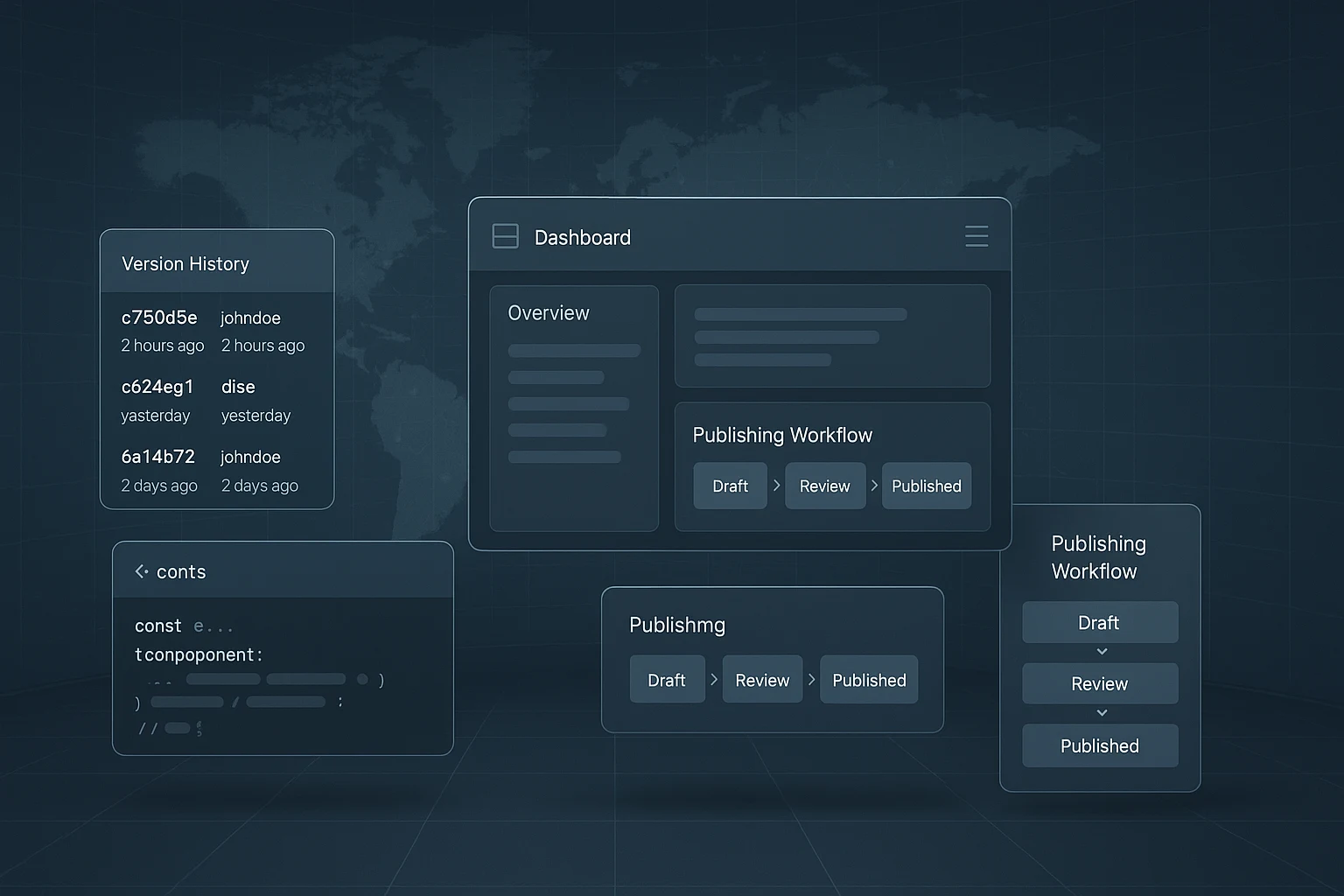Mastering Modern Content Management: CMSs, Workflows, and Governance at Scale
![]() Written by Brendan Byrne
| Wednesday, July 9, 2025
Written by Brendan Byrne
| Wednesday, July 9, 2025

When your organisation's digital strategy hinges on content, choosing the right content management system (CMS) is no small task. It's more than just picking a tool to publish pages—it's about orchestrating your entire content lifecycle with control, speed, and flexibility. From editorial workflows and version control to managing multiple brands under one roof, the right CMS architecture determines whether you’re set up for scale—or struggle with complexity.
In this article, we compare content management approaches, break down critical features, and highlight how systems like DataOT CMS are leading the way with multi-tenant flexibility, editorial ease, and AI-powered governance.
Why Traditional CMSs Fall Short Today
Most legacy CMSs were designed to serve one site, one team, one way of working. But the needs of modern businesses have outgrown these single-track systems.
Common pain points include:
- Rigid content models that stifle flexibility
- Manual editorial workflows that slow down publishing
- Poor version control leading to content errors
- Complex integrations and plugin dependencies
- No clear governance or audit trail across teams
The result? Bottlenecks, inconsistencies, and rising operational overhead.
CMS Comparison: Headless vs Traditional vs API-First Platforms
Let’s break down the three dominant CMS paradigms and how they impact your operations.
Traditional CMS (e.g. WordPress, Drupal)
- Pros: Easy setup, WYSIWYG editing, large plugin ecosystems
- Cons: Tightly coupled frontend/backend limits flexibility, versioning is often plugin-based, multi-site is clunky
- Best for: Small-scale websites or solo teams
Headless CMS (e.g. Contentful, Sanity)
- Pros: Decoupled architecture, easy multi-channel delivery
- Cons: Often lacks visual editing tools, requires dev-heavy workflows
- Best for: Tech-led teams with strong frontend capabilities
API-First Content Platforms (e.g. DataOT CMS)
- Pros: Combines the scalability of headless with the usability of traditional CMS, built-in automation, strong governance features
- Cons: May require initial setup or integration support
- Best for: Agencies, enterprises, content teams scaling across multiple sites, languages, or markets
Editorial Workflows: Automation and Ease for Modern Teams
Content doesn’t exist in a vacuum. From initial draft to final approval, your CMS should support an editorial flow that’s intuitive, collaborative, and trackable.
DataOT CMS excels here with:
- Custom workflow stages (e.g. Draft → Review → Legal → Publish)
- Role-based permissions, so marketers, editors, and legal teams stay in sync
- Automated notifications to nudge the next stakeholder in the chain
- AI-powered assistance for SEO suggestions, readability, and tagging
This means your content team can focus on creating—without chasing approvals or losing track of drafts.
Version Control: Trust Your Content History
You should never be afraid to hit “publish.” With robust version control, every change is tracked, reversible, and transparent.
Look for CMSs that offer:
- Complete edit history per page, block, or asset
- Roll-back capabilities for safe reversion
- Change attribution showing who made what edits and when
- Side-by-side comparisons to identify updates at a glance
With DataOT CMS, this functionality is built-in—not bolted on. You get the security of Git-style control, but designed for content creators, not developers.
Multi-Tenant Content Management: One Platform, Many Brands
If you manage multiple brands, regions, or clients, a single-tenant CMS quickly becomes unsustainable. You’re duplicating effort, repeating fixes, and risking inconsistency.
Multi-tenant CMS architecture solves this by allowing:
- Centralised governance with local flexibility
- Shared content libraries across brands or teams
- Template inheritance, so design changes cascade
- Isolated environments per tenant for clean data separation
DataOT CMS supports multi-tenant operations out-of-the-box, helping you streamline global content strategies without sacrificing customisation.
Content Governance: Control Without Chaos
Without governance, content strategies quickly become content messes. Governance in CMS means setting rules and guardrails that ensure content is on-brand, compliant, and effective.
DataOT helps teams maintain governance by offering:
- Content templates to enforce structure and voice
- Approval workflows tied to user roles
- Audit logs for compliance tracking
- AI-driven policy enforcement (like flagging off-brand language or missing meta data)
This isn’t about locking down creativity—it’s about freeing your team to create confidently, knowing the system has their back.
The DataOT Advantage: One CMS to Manage It All
Whether you’re publishing for one brand or one hundred, DataOT CMS combines:
- AI-powered automation to streamline publishing
- Enterprise-grade version control for peace of mind
- Multi-tenant design to scale effortlessly
- Built-in governance to keep everything on track
And it’s API-first, meaning you can integrate with your existing stack, marketing platforms, CRMs, or analytics tools—without replatforming.
Content Teams Deserve Better Tools
If your CMS is causing more work than it solves, it’s time to upgrade. Today’s high-performance content operations demand more: more control, more speed, more reliability.
Explore how DataOT’s unified platform can help you simplify content management across workflows, teams, and brands.
Discover the benefits of DataOT CMS and start building smarter.